
The Story
The Phoenician, the Palatine Phoenix, the Illuminator. Fulgrim, primarch of the Third Legion, collects epithets like the art that he so values, striving the be the most perfect specimen amongst a brotherhood of demi-gods. His sons amongst the Emperor’s Children hurry in his wake, ever onwards to becoming better warriors, more sophisticated strategists or craftier artists. But where does aspiration end and obsession begin? Where justified pride and envious vanity? When the eldritch entity known as She Who Thirsts reaches their claws for the soul of the Third, they dig deep and find grateful purchase: the Third shall become the most gloriously dissonant voice in the choir of the damned. But first Fulgrim has to face the one he never thought he’d have to cross: his beloved brother Ferrus Manus.
After the curtain has fallen on the first act of their fall and the treacheries of Isstvan have run their course, the Warmaster will pair the Third with the Iron Warriors of Perturabo on a mission of special importance. While they couldn’t be more different in credo and character from their vainglorious brothers, Chaos has many ways to turn the valorous into the wicked and Perturabo and his sons are treading their very own road to hell, fueled in part by their bitter hatred for Rogal Dorn and the Imperial Fists.
This Omnibus follows the arcs of these two Legions amongst the initial moves of the Heresy, whose paths will eventually interweave during the search for the mysterious “Angel Exterminatus”.
Reading Order
- Fulgrim
- Kryptos (LoB)
- The Iron Within (AoD or LW)
- The Crimson Fist (SoT)
- The Reflection Crack'd (Prim)
- Angel Exterminatus
- Imperfect (WwE or LW)
- Ironfire (EoT)
- Lucius The Eternal Blademaster (LoB)
- Chirurgeon (WwE)
Why this Reading Order?
Fulgrim (2007) by Graham McNeill was the fifth novel released for the Horus Heresy. It was a dedicated exploration of the fall of one particular Legion, the IIIrd Legion Emperor’s Children, alongside their titular, prideful primarch. The Emperor’s Children had been prominent on the pages of the Heresy from the get-go, with the likes of Saul Tarvitz and Lucius the Swordsman being integral parts of the story of the opening trilogy. Fulgrim deepened the tale of their corruption and pushed the timeline of the series forward to one of the most crucial events of the whole conflict: the Dropsite Massacre of Isstvan V.
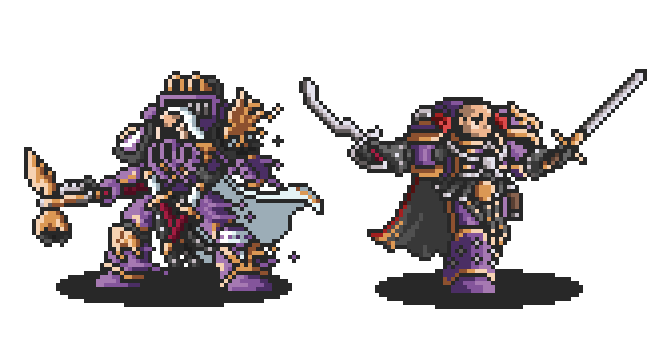
McNeill later wrote Angel Exterminatus (2012) as a sequel to Fulgrim. In that novel, McNeill paired the Third with a different Legion that he was already familiar with as a writer: the Iron Warriors. McNeill had written Storm of Iron in 2002 (so 4 years before the release of the first Horus Heresy novel), a Warhammer 40.000 novel about an Iron Warriors warhost laying siege to an Imperial citadel. McNeill used Angel Exterminatus as an opportunity to look back at several of his Iron Warriors from Storm of Iron - Barban Falk, Honsou, Forrix, Kroeger - during a time deep in their past when they were still regular warriors of the Legiones Astartes and not the corrupted reavers of Chaos from the grim darkness of the far future. Angel Exterminatus also gave one of the until then mostly one-dimensional primarchs, Perturabo, an empathetic do-over and shaped the Lord of Iron into a tragic, three-dimensional character.
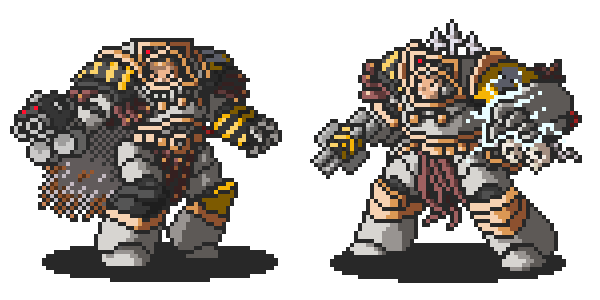
The Last Phoenix, the second of three Horus Heresy Omnibuses published by Black Library, collected the two novels alongside two novellas and half a dozen short-stories. It was also the book that really sold me on the concept of Horus Heresy omnibuses in general, because it showed what the omnibus-format could do for a series like this.
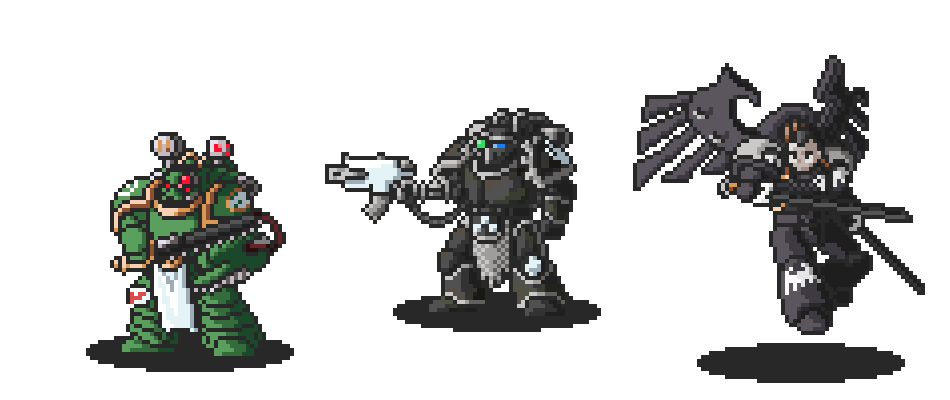
I had a frustrating experience with Angel Exterminatus: I expected a straight-up sequel to Fulgrim, which I was very familiar with, but quickly ran into a lot of "wait, did I miss something?"-moments. The mistake I had made was considering the anthologies of novellas and short-stories to be purely optional, because of which I had missed out on quite a bit between the two novels: There had been a major character development for Fulgrim in-between the two novels in the novella The Reflection Crack'd. Their partners in crime in Angel, Perturabo and the Iron Warriors, had already been introduced as a philosophy in the short-story The Iron Within and as full characters in the novella The Crimson Fist. The crew of the Shattered Legion cruiser Sisypheum had been introduced in the short-story Kryptos. Last but not least there were little stories and asides like Chirurgeon which gave secondary characters like Fabius Bile more depth and context.
The omnibus retroactively solved this issue: Where I had to look up and backtrack what I'd missed or what might be interesting to read as an epilogue, The Last Phoenix (mostly) simply bundled together and presented as a coherent narrative flow.
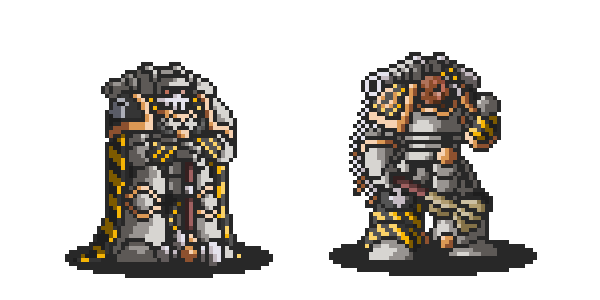
As with the other two omnibuses based on the original Black Library ones, I allowed myself to tweak the reading order of my own version of The Last Phoenix a bit because the original book is not officially sold anymore. I added Kryptos, which had been missing from the original Phoenix. I moved The Phoenician away into a different Omnibus, because it felt repetitious directly after Fulgrim and could be used elsewhere to good effect. Ironfire was added because it is a sort-of sequel to The Iron Within and gives a characterful taste of Iron Warriors' callousness.
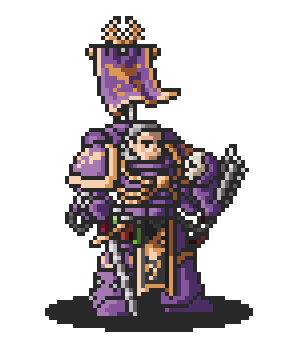
The title of my own version of this reading order, 'Shattersong', is a reference to the Fabius Bile-series by Josh Reynolds, which follows the exploits of the (by then former) Chief-Apothecary of the Emperor’s Children a few thousand years after the end of the Heresy.
Q: Why is the novel Fulgrim included here again, despite it already being part of the preceding omnibus?
A: My self-set goal for the omnibuses is that they should succeed on two standards, a two-fold goal that mirrors the task the authors had when writing the novels themselves: every instalment should work as a piece of the wider puzzle of the series, but should also tell a satisfying story of its own. So while I give all these instructions about required reading, fitting follow-ups and the whole flow-chart with good reason, I think the omnibuses should also be worthwhile reads if picked out-of-order. If a reader has heard about a certain battle of the Heresy or is just very interested in a particular Legion or primarch, they might decide to just jump straight into a given omnibus that’s explicitly about that without bothering with recommended prequels. I'd like to make it worth their while, and some stories simply aren’t complete without certain novels, in this case the story of the Emperor's Children without Fulgrim. If you have already read a novel that you come across a second time, you can of course just ignore the second inclusion and go straight for the following stories.
Additions from 'The Primarchs' & 'Horus Heresy Characters'
Fulgrim: The Palatine Phoenix by Josh Reynolds shows Fulgrim and the Emperor's Children early on in the Great Crusade. Eager to rebuild his Legion's spirit and reputation in the wake of the devastation of the gene-plague that nearly eradicated them (see Chirurgeon), Fulgrim sets himself a bet: conquering a whole world...with just seven warriors. The premise of the story allows Josh Reynolds to focus on his strengths, omitting vast battles for witty dialogue, diplomatic schenanigans and, indeed, a dinner party. The book also manages the fine balance of showcasing Fulgrim’s impressive skills and charisma, but also subtly working in the shadows of the faults that would become his downfall later on. Propably best read after you've finished Graham McNeill's Fulgrim. Here's Josh Reynolds talking about The Palatine Phoenix.
Perturabo: Hammer of Olympia by Guy Haley is an unusual Primarchs-novel, because while many of these books are character studies of their titular subject during the Great Crusade, Perturabo's book actually fills an important gap in his character development: the massacre of his homeworld, Olympia. Only briefly touched upon in the Heresy books as something that recently happened, this is an event that shook Perturabo to his bitter core and presented a crucial opening for Horus' call for open rebellion against the Emperor. Hammer of Olympia tells the story leading up to this from the moment that Perturabo's birthing-pod arrived on the world, through the years of his youth and coming-of-age until and beyond his installment as one of the Emperor's generals and Legion-sires. The book really digs into Perturabo's personality and works great as a prequel before or as an additional deep-dive after Angel Exterminatus.
The short story Primacy by Marc Collins (only available as an eShort) can be read as an additional outro to Angel Exterminatus, which takes a closer look at the fate of Lord-Commander Eidolon.
Required and Recommended Reading
As one of four Omnibuses from Phase II, this can be read directly after Heresy Rising.
Follow-Up
Both Fulgrim and Perturabo will make their next appearance in one of the Shadow of the Warmaster-Omnibuses. Fulgrim is part of the action of the novel Vengeful Spirit in Shadow of the Warmaster II: Lords of Death, which could be read next after Shattersong.
If you follow my recommended reading order, you'll have to wait for quite some time until you meet Perturabo again. His story is continued and gets concluded in Shadow of the Warmaster IV: The Dead and the Dying, one of the closing Omnibuses right at the end of the reading order.
The Emperor's Children under Eidolon will haunt the White Scars on the pages of Ordu of the Khan.
A natural sequel to Shattersong would also be The Truth of Iron, which looks at the Iron Hands in the wake of their butchering by the Emperor's Children at Isstvan. The story of the crew of the Sisypheum is continued there as well.
If you want to know what happened to Alexis Polux in the aftermath of The Crimson Fist, make your way to Imperium Secundus I: Hope’s Kindling (but make sure to check out the "Required & Recommende Reading" section for that one before jumping right into it).
In general, I’d recommend reading all of the four Phase II Omnibuses (Shadow of the Warmaster I; Shattersong; Shadow Crusade I; The Burning of Prospero) at some point before proceeding into the later Phases, no matter what road you'd like to pursue. All of them cover important events for the series (the flight of the Eisenstein and the formation of the Knights-Errant; the Dropsite Massacre of Isstvan V and its fall-out; the corruption of the Word Bearers and the Battle of Calth; the destruction of Prospero) and introduce characters that will be recurring players all across the series.
Once you've read all of them, you can either proceed to one of their Follow-up omnibuses or jump into one of the Phase III-omnibuses that don't have a direct prequel: Omnissiah I: Death of Innocence, Angels of Darkness or Anvil of War.
Required Books
Novels (in order of appearance)
- Fulgrim
- Angel Exterminatus
Anthologies (in order of appearance)
- Legacies of Betrayal (LoB)
- Age of Darkness (AoD)
- Shadows of Treachery (SoT)
- The Primarchs (Prim)
- Eye of Terra (EoT)
- War Without End (WwE)
- ALTERNATIVE: Lupercal's War (LW) (s. notes below)
A note on anthologies: Listed above are the anthologies that together contain every short-story and novella listed under Reading Order. Instead of buying whole anthologies, you can also buy each of the individual stories as an individual eBook. The price per story is higher when buying individual eBooks compared to buying them as part of an anthology.
For saving's sake you could also try to get hold of a copy of the original The Last Phoenix on eBay, if you manage to find one offered at a reasonable price.
An alternative source for Imperfect and The Iron Within is the anthology Lupercal's War (LW). It was released as a "Start Here" reading option alongside the 2nd edition of the Horus Heresy tabletop game in 2022. The collection contains 18 short stories picked from across the numbered Horus Heresy anthologies as well as 3 stories that were previously only available as eShorts (Child of Chaos, Bloodhowl & Champion of Oaths).
Beyond the Heresy
The following are recommendations from other series and the wider Black Library canon. If you are interested in the characters, factions or themes that were part this omnibus, the following books might also be to your liking.
Books from the 41st millenium:
-
Fabius Bile-trilogy by Josh Reynolds, starting with Primogenitor
- Another favorite of mine, this trilogy of novels invites you into the twisted, monstrous, beautiful world of Fabius Bile, known as Primogenitor, Clonelord, Manflayer. Nested deep into the Eye of Terror, the good doctor tries to navigate the pursuit of his Great Work amidst the annoying distractions of fellow Chaos Space Marines, daemonic heralds, Aeldari Harlequins and the gods themselves. As of August 2022, the series is also available as an omnibus.
-
Lucius the Faultless Blade by Ian St. Martin
- This novel takes a look at another infamous Emperor's Children, Lucius the Eternal. Probably intended as the start of a series that never went beyond its first novel, the book is nevertheless a fun ride with truly dark and twisted passages and a host of interesting characters beyond The Swordsman himself. Here's Ian St. Martin talking about The Faultless Blade
-
Storm of Iron by Graham McNeill, also available as part of Iron Warriors: The Omnibus
- This novel, already mentioned above, preceeds the Heresy book series and served as the source for many of the Iron Warriors that appear in Graham McNeill's Horus Heresy stories. In classic fashion, it shows the Iron Warriors, by then twisted by millenia of Chaotic influence, at what they do best: laying siege to an Imperial fortress at some point of the 41st millenium. This shows the end of the road - one way or other - for many of the prominent Iron Warriors that survive the end of the Heresy. Here you can read a retrospective on the novel